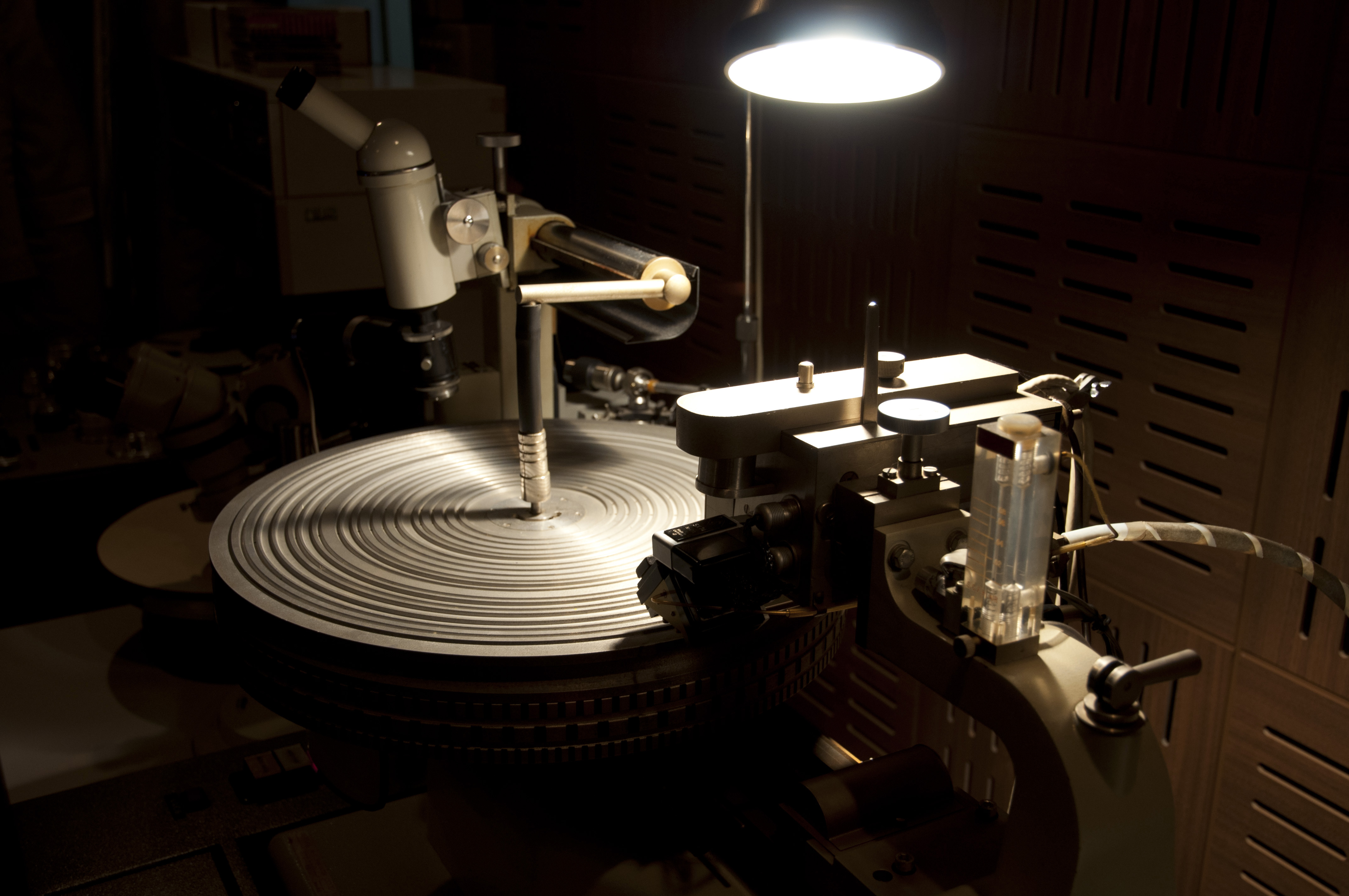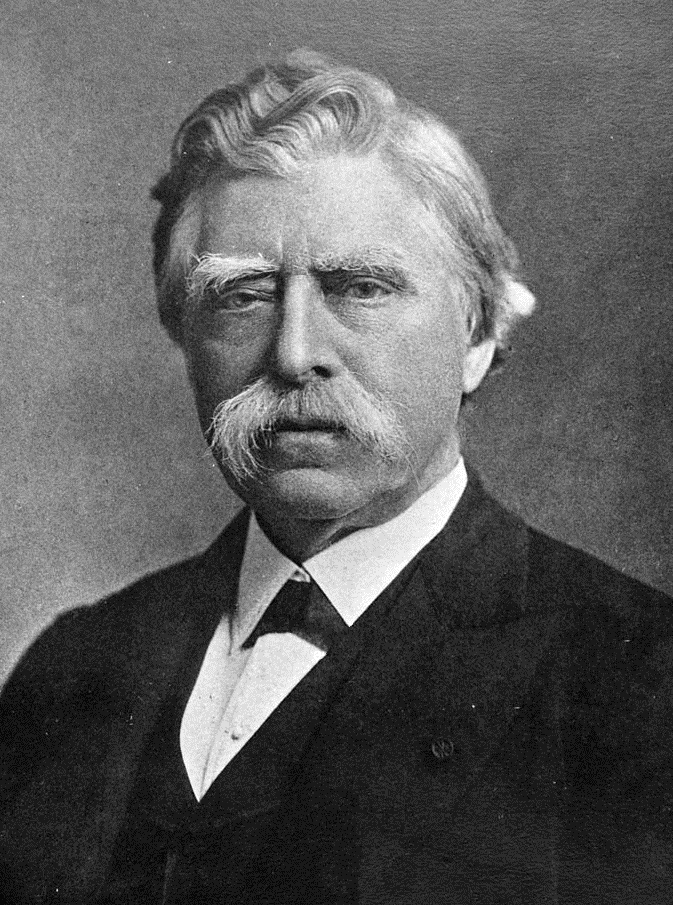|
Decca Tree
The Decca Tree is a spaced microphone array most commonly used for orchestral recording. It was originally developed as a sort of stereo A–B recording method adding a center fill. The technique was developed in the early 1950s and first commercially used in 1954 by Arthur Haddy, Roy Wallace, and later refined by engineer Kenneth Ernest Wilkinson and his team at Decca Records, to provide a strong stereo image. The Decca Tree setup evolved from the idea of a minimal recording technique using a pair of microphones. The first system was developed by Roy Wallace. The microphone triangle was placed about 3 to 3.6 m high above the stage level, near the conductor. The microphone system is not properly in front of the orchestra, but more "into" the orchestra. Two more microphones can be added and placed on the sides (called "outrigger microphones"), approximately at about 2/3 of the stage width, between the conductor and the outer orchestra boundary. Setup A Decca Tree setup uses t ... [...More Info...] [...Related Items...] OR: [Wikipedia] [Google] [Baidu] |
Decca Tree
The Decca Tree is a spaced microphone array most commonly used for orchestral recording. It was originally developed as a sort of stereo A–B recording method adding a center fill. The technique was developed in the early 1950s and first commercially used in 1954 by Arthur Haddy, Roy Wallace, and later refined by engineer Kenneth Ernest Wilkinson and his team at Decca Records, to provide a strong stereo image. The Decca Tree setup evolved from the idea of a minimal recording technique using a pair of microphones. The first system was developed by Roy Wallace. The microphone triangle was placed about 3 to 3.6 m high above the stage level, near the conductor. The microphone system is not properly in front of the orchestra, but more "into" the orchestra. Two more microphones can be added and placed on the sides (called "outrigger microphones"), approximately at about 2/3 of the stage width, between the conductor and the outer orchestra boundary. Setup A Decca Tree setup uses t ... [...More Info...] [...Related Items...] OR: [Wikipedia] [Google] [Baidu] |
Microphone
A microphone, colloquially called a mic or mike (), is a transducer that converts sound into an electrical signal. Microphones are used in many applications such as telephones, hearing aids, public address systems for concert halls and public events, motion picture production, live and recorded audio engineering, sound recording, two-way radios, megaphones, and radio and television broadcasting. They are also used in computers for recording voice, speech recognition, VoIP, and for other purposes such as ultrasonic sensors or knock sensors. Several types of microphone are used today, which employ different methods to convert the air pressure variations of a sound wave to an electrical signal. The most common are the dynamic microphone, which uses a coil of wire suspended in a magnetic field; the condenser microphone, which uses the vibrating diaphragm as a capacitor plate; and the contact microphone, which uses a crystal of piezoelectric material. Microphones typi ... [...More Info...] [...Related Items...] OR: [Wikipedia] [Google] [Baidu] |
Surround Sound
Surround sound is a technique for enriching the fidelity and depth of sound reproduction by using multiple audio channels from speakers that surround the listener (surround channels). Its first application was in movie theaters. Prior to surround sound, theater sound systems commonly had three ''screen channels'' of sound that played from three loudspeakers (left, center, and right) located in front of the audience. Surround sound adds one or more channels from loudspeakers to the side or behind the listener that are able to create the sensation of sound coming from any horizontal direction (at ground level) around the listener. The technique enhances the perception of sound spatialization by exploiting sound localization: a listener's ability to identify the location or origin of a detected sound in direction and distance. This is achieved by using multiple discrete audio channels routed to an array of loudspeakers. Surround sound typically has a listener location ( sweet ... [...More Info...] [...Related Items...] OR: [Wikipedia] [Google] [Baidu] |
Ron Streicher
Ron is a shortening of the name Ronald. Ron or RON may also refer to: Arts and media * Big Ron (''EastEnders''), a TV character * Ron (''King of Fighters''), a video game character *Ron Douglas, the protagonist in ''Lucky Stiff'' played by Joe Alasky *Ron Weasley, a character in ''Harry Potter.'' Language * Ron language, spoken in Plat State, Nigeria * Romanian language (ISO 639-3 code ron) People Mononym *Ron (singer), Rosalino Cellamare (born 1953), Italian singer Given name *Ron (given name) Surname *Dana Ron (born 1964), Israeli computer scientist and professor * Elaine Ron (1943-2010), American epidemiologist *Emri Ron (born 1936), Israeli politician *Ivo Ron (born 1967), Ecuadorian football player * Jason De Ron (born 1973), Australian musician * José Ron (born 1981), Mexican actor *Liat Ron, actress, dancer and dance instructor * * Lior Ron (born 1982), Israeli-American film and trailer composer and musician * Michael Ron (born 1932), Israeli fencer * Michael Røn ... [...More Info...] [...Related Items...] OR: [Wikipedia] [Google] [Baidu] |
Blumlein Pair
Blumlein pair is a stereo recording technique invented by Alan Blumlein for the creation of recordings that, upon replaying through headphones or loudspeakers, recreate the spatial characteristics of the recorded signal. The pair consists of an array of two matched microphones that have a bi-directional (figure-8) pickup pattern. They are positioned 90° from each other. Ideally, the transducers should occupy the same physical space; since this cannot be achieved, the microphone capsules are placed as close to each other as physically possible, generally with one centered directly above the other. The array is oriented so that the line bisecting the angle between the two microphones points towards the sound source to be recorded (see diagram). The pickup patterns of the pair, combined with their positioning, delivers a high degree of stereo separation in the source signal, as well as the room ambiance. The Blumlein pair produces an exceptionally realistic stereo image, but the qu ... [...More Info...] [...Related Items...] OR: [Wikipedia] [Google] [Baidu] |
Intensity Stereophony
Intensity may refer to: In colloquial use *Strength (other) *Amplitude * Level (other) * Magnitude (other) In physical sciences Physics *Intensity (physics), power per unit area (W/m2) *Field strength of electric, magnetic, or electromagnetic fields (V/m, T, etc.) * Intensity (heat transfer), radiant heat flux per unit area per unit solid angle (W·m−2·sr−1) * Electric current, whose value is sometimes called ''current intensity'' in older books Optics *Radiant intensity, power per unit solid angle (W/sr) *Luminous intensity, luminous flux per unit solid angle (lm/sr or cd) * Irradiance, power per unit area (W/m2) Astronomy *Radiance, power per unit solid angle per unit projected source area (W·sr−1·m−2) Seismology * Mercalli intensity scale, a measure of earthquake impact *Japan Meteorological Agency seismic intensity scale, a measure of earthquake impact *Peak ground acceleration, a measure of earthquake acceleration (g or m/s2) Acoust ... [...More Info...] [...Related Items...] OR: [Wikipedia] [Google] [Baidu] |
Vacuum Tube
A vacuum tube, electron tube, valve (British usage), or tube (North America), is a device that controls electric current flow in a high vacuum between electrodes to which an electric potential difference has been applied. The type known as a thermionic tube or thermionic valve utilizes thermionic emission of electrons from a hot cathode for fundamental electronic functions such as signal amplification and current rectification. Non-thermionic types such as a vacuum phototube, however, achieve electron emission through the photoelectric effect, and are used for such purposes as the detection of light intensities. In both types, the electrons are accelerated from the cathode to the anode by the electric field in the tube. The simplest vacuum tube, the diode (i.e. Fleming valve), invented in 1904 by John Ambrose Fleming, contains only a heated electron-emitting cathode and an anode. Electrons can only flow in one direction through the device—from the cathode to the ... [...More Info...] [...Related Items...] OR: [Wikipedia] [Google] [Baidu] |
Georg Neumann GmbH
Georg Neumann GmbH (Neumann), founded in 1928 and based in Berlin, Germany, is a prominent manufacturer of professional recording microphones. Their best-known products are condenser microphones for broadcast, live and music production purposes. For several decades Neumann was also a leading manufacturer of cutting lathes for phonograph disks, and even ventured into the field of mixing desks. Currently it is also a manufacturer of preamplifiers, studio monitors and headphones. History Early years The company's original product was the CMV 3, the world's first commercially available condenser microphone. It was a rather large (40 cm tall, 9 cm diameter) microphone with several interchangeable capsule heads which gave it different directional patterns. Because of its shape and size, this microphone was often known as the "Neumann bottle". It is often seen in historical photographs of public events in Germany through the period of World War II. Neumann's factory in Berlin was dam ... [...More Info...] [...Related Items...] OR: [Wikipedia] [Google] [Baidu] |
Microphone
A microphone, colloquially called a mic or mike (), is a transducer that converts sound into an electrical signal. Microphones are used in many applications such as telephones, hearing aids, public address systems for concert halls and public events, motion picture production, live and recorded audio engineering, sound recording, two-way radios, megaphones, and radio and television broadcasting. They are also used in computers for recording voice, speech recognition, VoIP, and for other purposes such as ultrasonic sensors or knock sensors. Several types of microphone are used today, which employ different methods to convert the air pressure variations of a sound wave to an electrical signal. The most common are the dynamic microphone, which uses a coil of wire suspended in a magnetic field; the condenser microphone, which uses the vibrating diaphragm as a capacitor plate; and the contact microphone, which uses a crystal of piezoelectric material. Microphones typi ... [...More Info...] [...Related Items...] OR: [Wikipedia] [Google] [Baidu] |
Schoeps
Schalltechnik Dr.-Ing. Schoeps GmbH, known as Schoeps Mikrofone, is a German manufacturer of professional studio condenser microphones for recording and broadcast. The privately owned company is based in Karlsruhe, south-west Germany, and was founded in 1948. Microphones All microphones made by Schoeps employ traditional (i.e. externally polarized, not electret) condenser transducers, and use small-diaphragm, single-diaphragm capsules, even in microphones which offer two or three different directional patterns. All models introduced since 1973, as well as some models from even earlier, have featured transformerless output circuitry. Colette The Schoeps "Colette" (CMC) series of microphones is a series of four amplifiers, for different powering schemes, and about 20 capsules, for different directional patterns and/or frequency response characteristics; any capsule of the series is compatible with any of the amplifiers. This was the first type of microphone to let the user separ ... [...More Info...] [...Related Items...] OR: [Wikipedia] [Google] [Baidu] |
Microphone Array
A microphone array is any number of microphones operating in tandem. There are many applications: * Systems for extracting voice input from ambient noise (notably telephones, speech recognition systems, hearing aids) * Surround sound and related technologies * Binaural recording * Locating objects by sound: acoustic source localization, e.g., military use to locate the source(s) of artillery fire. Aircraft location and tracking. * High fidelity original recordings * Environmental noise monitoring * Robotic navigation (acoustic SLAM) Typically, an array is made up of omnidirectional microphones, directional microphones, or a mix of omnidirectional and directional microphones distributed about the perimeter of a space, linked to a computer that records and interprets the results into a coherent form. Arrays may also be formed using numbers of very closely spaced microphones. Given a fixed physical relationship in space between the different individual microphone transducer ar ... [...More Info...] [...Related Items...] OR: [Wikipedia] [Google] [Baidu] |






